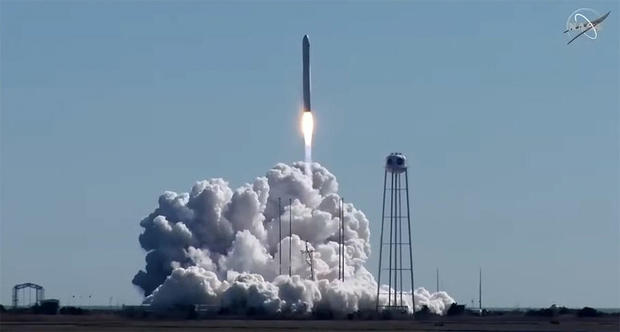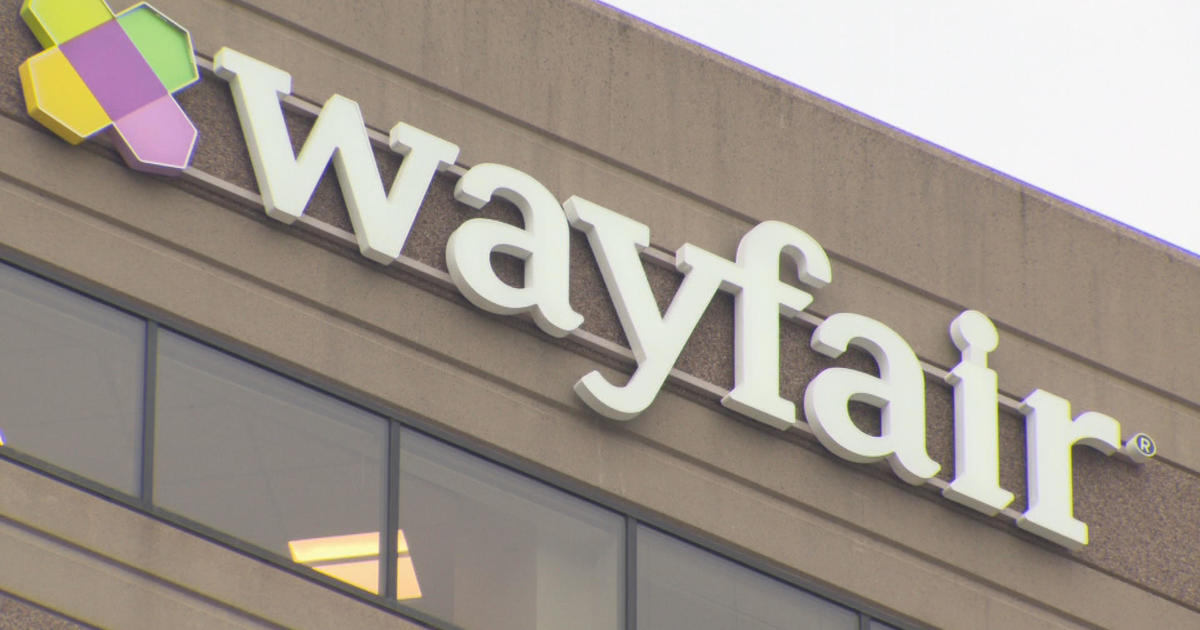Northrop Grumman launches space station supply mission
A Northrop Grumman Antares rocket streaked away from Virginia's Eastern Shore Saturday, boosting a Cygnus cargo ship into orbit with more than four tons of supplies and equipment bound for the International Space Station.
The rocket's two Russian-built RD-181 first stage engines roared to life at 12:40 p.m. EST, throttled up to full thrust and smoothly pushed the vehicle away from pad 0A at the Mid-Atlantic Regional Spaceport (MARS) at NASA's Wallops Island, Virginia, flight test facility.
Arcing away to the southeast, the first stage, designed and built in Ukraine, quickly powered out of the dense lower atmosphere and fell away, handing off to a Northrop Grumman-built solid-fuel second stage motor for the remainder of the climb to orbit.
Five-and-a-half minutes later, the Cygnus cargo ship separated from the spent second stage and the freighter set off after the International Space Station, on track to complete an automated two-day rendezvous at 4:35 a.m. Monday.
At that point, astronauts Raja Chari and Kayla Barron, operating the station's robot arm, will latch onto a grapple fixture so ground controllers in Houston can remotely pull the spacecraft in for berthing at the lab's Earth-facing Unity module.
On board for Northrop Grumman's 17th space station resupply run: more than 8,300 pounds of equipment and supplies, including nearly a ton of science gear.
"Over the course of a year, there are hundreds of experiments on the ISS, and during the average six-month increment, we can have roughly 300 investigations ongoing," said Jennifer Buchli, deputy chief scientist. "This flight brings up roughly 40 science investigations for NASA, the U.S. National Lab and our international partners."
Also on board: more than two tons of station supplies, spare parts, computer gear, solar array mounting hardware, crew clothing and fresh food, including avocados, tomatoes, grapefruit, pears, blueberries and ice cream.
In a first for the Cygnus program, the spacecraft has been modified to enable its main engine to raise the station's altitude, a service normally provided by engines in Russian modules and Progress supply ships.
"We've optimized the Cygnus configuration to remove some secondary structural elements to maximize the cargo load and also allow for full fuel load that enables a new operational capability, a reboost," said Steve Krein, Northrop Grumman vice president of civil and commercial space.
While the space station typically flies at an altitude of about 260 miles, enough atoms and molecules are present in the extreme upper atmosphere to slow the football-field-size spacecraft ever so slightly, causing it to lose altitude as it races along at nearly five miles per second. Periodic rocket firings are required to maintain the desired orbit.
Krein said the Northrop Grumman spacecraft is now equipped with a "gimbaled delta velocity engine, or DVE, that will allow Cygnus to provide reboost, or orbit-raising capability, for station during berthed operations." The first such maneuver is expected in April.
Unlike SpaceX's all-American Dragon cargo ship and Falcon 9 rocket, the Cygnus and its Antares 230+ booster include major components built in other countries. The RD-181 engines are built by NPO Energomash in Russia and other major elements of the first stage are provided by KB Yuzhnoye/Yuzhmash in Ukraine.
Asked about the company's contingency plans given the threat of a Russian invasion of Ukraine, Kurt Eberly, Northrop Grumman director of space launch, said "we're obviously monitoring the situation, and hopefully it can be resolved."
In the meantime, "we have all of the hardware we need for all the missions we have on contract with NASA," he said. "So that includes NG-17, 18 and 19. All that hardware is here at Wallops. And so, hopefully, that will tide us over until these tensions can subside and we can be back to normal operating procedure."





